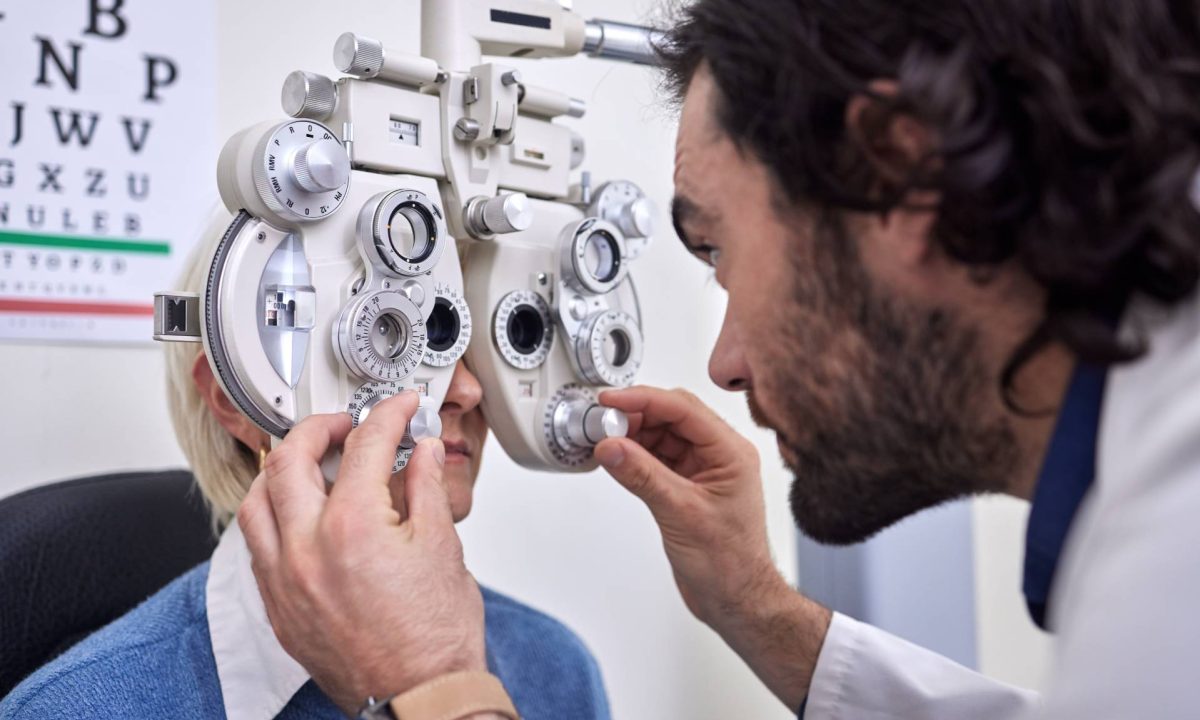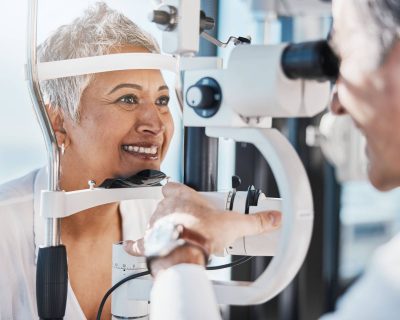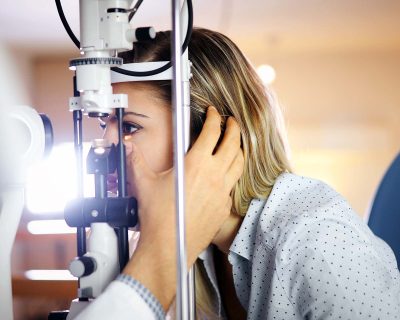
Common Eye Conditions Explained
Clear vision is essential for various aspects of daily life, including work, education, social interactions, and recreational activities. Being aware of common eye conditions can allow you to recognize potential symptoms early on. Early detection often leads to more effective treatment and management of eye conditions, preventing further deterioration of vision or potential complications. Understanding and managing eye conditions contribute to an improved quality of life by maintaining good vision and eye comfort.
Here are some common eye conditions explained:
Myopia
Myopia, commonly known as nearsightedness, is a vision condition in which close objects can be seen clearly, but objects at a distance appear blurry. This occurs when the eyeball is too long or the cornea, which is the transparent front part of the eye, has too much curvature. As a result, light entering the eye is not focused correctly onto the retina, causing distant images to be out of focus.
The primary symptom of myopia is difficulty seeing distant objects clearly. People with myopia often unconsciously squint in their attempt to see distant objects more clearly. Extended periods of reading or other close work may lead to tired or fatigues eyes in individuals with myopia. Furthermore, prolonged periods of visual strain and squinting can contribute to headaches.
While the exact causes of myopia are not fully understood, genetics and environment are some factors associated with the development of myopia. If one or both parents are nearsighted, there is an increased likelihood that their children will develop myopia. Furthermore, spending extended periods of time on activities that require close-up vision may contribute to the development of myopia. Limited exposure to natural outdoor light has also been associated with a higher risk of myopia.
Myopia can develop at various stages in life. In many cases, it begins during childhood and tends to stabilize once a person reaches adulthood. Regular eye examinations are essential for early detection, accurate prescription of corrective lenses, and monitoring any changes in vision.
Hyperopia
Hyperopia, commonly known as farsightedness, is a vision condition where distant objects can be seen more clearly than close ones. Hyperopia is primarily caused when the eyeball is too short or the cornea has too little curvature. As a result, light entering the eye is not focused directly on the retina and, instead, falls behind it.
People with hyperopia often have difficulty seeing objects up close, such as when reading a book or looking at a computer screen. Up close activities or detailed work may be challenging without the use of corrective lenses. Performing tasks that require near vision can lead to eyestrain, and prolonged periods of close work may also lead to headaches, especially if the hyperopia is uncorrected.
Hyperopia tends to be connected to genetic factors. If one or both parents are farsighted, there is an increased likelihood that their children may also develop hyperopia. Hyperopia can be present from birth and is often detected during routine eye examinations.
Astigmatism
Astigmatism is a vision condition that occurs when the cornea or lens of the eye has an irregular shape. Instead of being uniformly curved, as in a normal eye, the cornea or lens may have areas with steeper or flatter curvature. This causes light to focus on multiple points rather than a single point on the retina, resulting in distorted or blurred images at any distance. Astigmatism can occur on its own or in combination with other conditions like myopia or hyperopia.
One of the primary symptoms of astigmatism is blurred vision, which can affect both near and distance vision. Astigmatism can cause images to appear doubled, ghosted, or shadowed, particularly in low-light conditions. It may also result in increased glare or halos around lights, making it challenging to see clearly at night. Astigmatism may lead to eyestrain, especially during activities that require focused vision. Prolonged periods of visual strain and squinting to compensate for astigmatism can contribute to headaches.
Astigmatism can be diagnosed during a comprehensive eye examination. Corrective measures, such as eyeglasses or contact lenses, can be prescribed to compensate for the irregularities in the cornea or lens. Individuals with astigmatism may experience more frequent changes in their eyeglass or contact lens prescriptions compared to those without astigmatism.
Presbyopia
Whereas the previously mentioned eye conditions can be present at birth or early childhood, presbyopia is an age-related vision condition that typically becomes noticeable around the age of 40. Presbyopia is mainly caused by the natural aging process of the eye and is characterized by a gradual loss of the eye’s ability to focus on objects up close.
Some of the factors that contribute to presbyopia are lens hardening and muscle weakness. The crystalline lens in the eye gradually becomes harder and less flexible over time. This loss of flexibility impairs the lens’s ability to change shape, making it challenging to focus on nearby objects. The ciliary muscles, responsible for changing the shape of the lens to focus on objects at different distances, also weaken with age. This weakening makes it difficult for the eye to adjust and focus on close-up tasks.
People with presbyopia often notice that their vision becomes blurry when trying to read or perform tasks at close distances. When trying to focus on close objects or after extended periods of close focus, individuals with presbyopia may experience eyestrain and headaches. Presbyopia affects everyone to some extent as they get older. While presbyopia cannot be prevented, it can be corrected with eyeglasses, contact lenses, or other treatment options.
Age-Related Macular Degeneration (AMD)
Age-Related Macular Degeneration (AMD) is a progressive eye condition that affects the macula, which is the central part of the retina responsible for sharp, central vision needed for activities like reading, driving, and recognizing faces. AMD typically develops as people age, and it is a leading cause of vision loss in individuals over the age of 50.
There are two main types of AMD: dry AMD and wet AMD. Dry AMD is more common and occurs when the macula thins over time, leading to gradual vision loss. Wet AMD, although less common, is more severe and occurs when abnormal blood vessels grow beneath the macula, leaking blood and fluid, which can cause rapid and severe vision loss if left untreated.
Risk factors for AMD include age, genetics, smoking, obesity, and prolonged exposure to UV light. While there is currently no cure for AMD, early detection and intervention can help slow its progression and preserve vision. Treatment options may include lifestyle changes, nutritional supplements, medications, laser therapy, or injections into the eye to inhibit the growth of abnormal blood vessels. Regular eye exams are essential for monitoring AMD and initiating prompt treatment when necessary to maintain optimal vision and quality of life
Regular eye examinations with an optometrist are essential for monitoring eye health, detecting conditions early, and receiving appropriate guidance on maintaining optimal vision.




